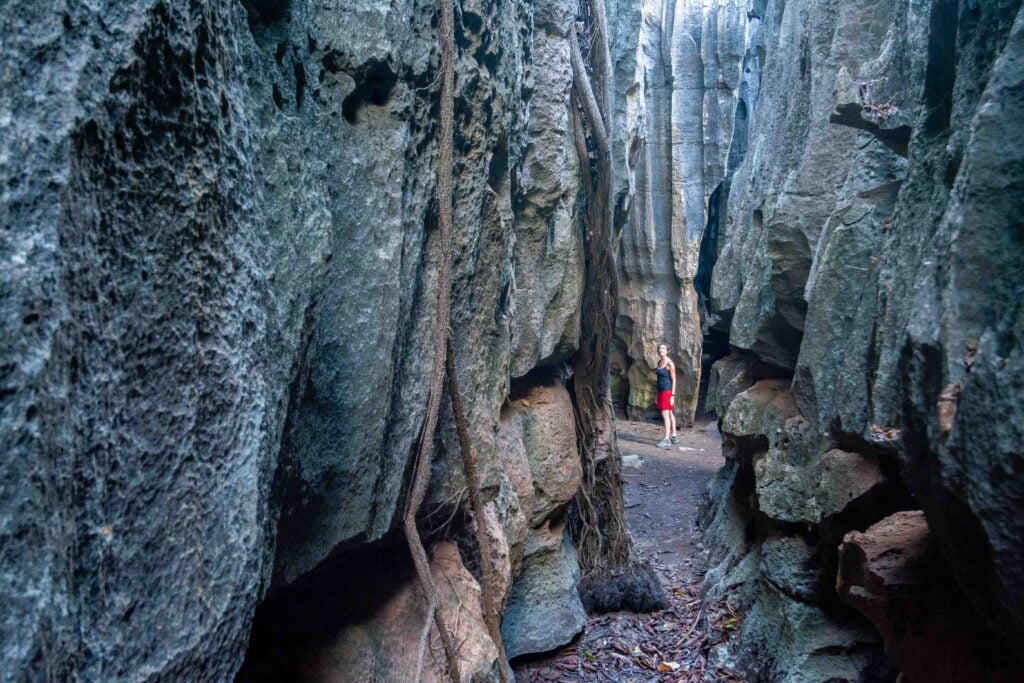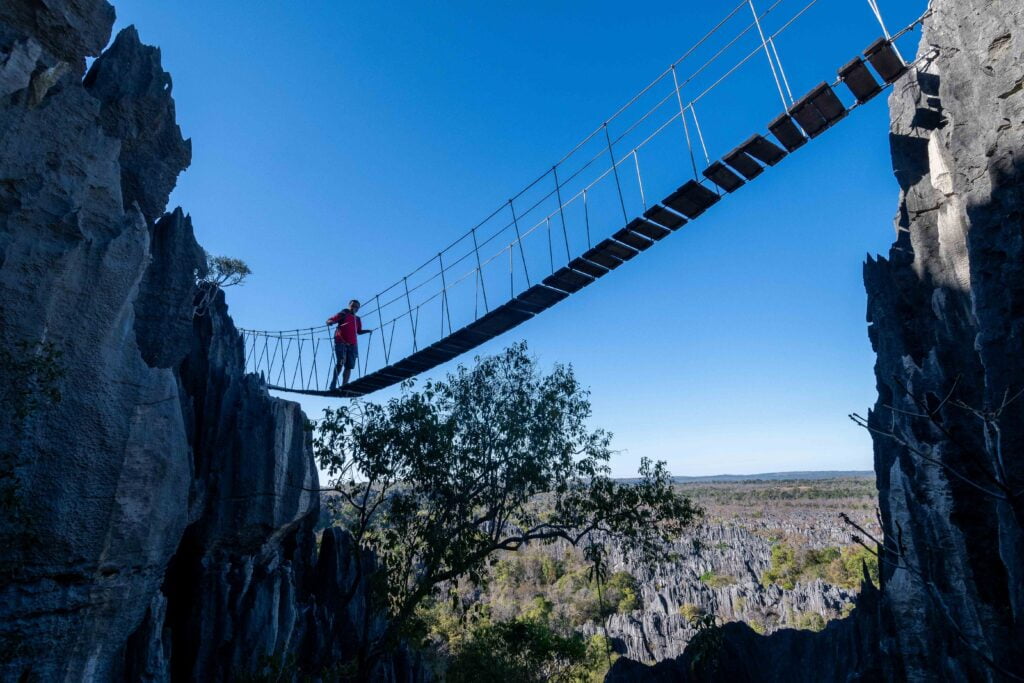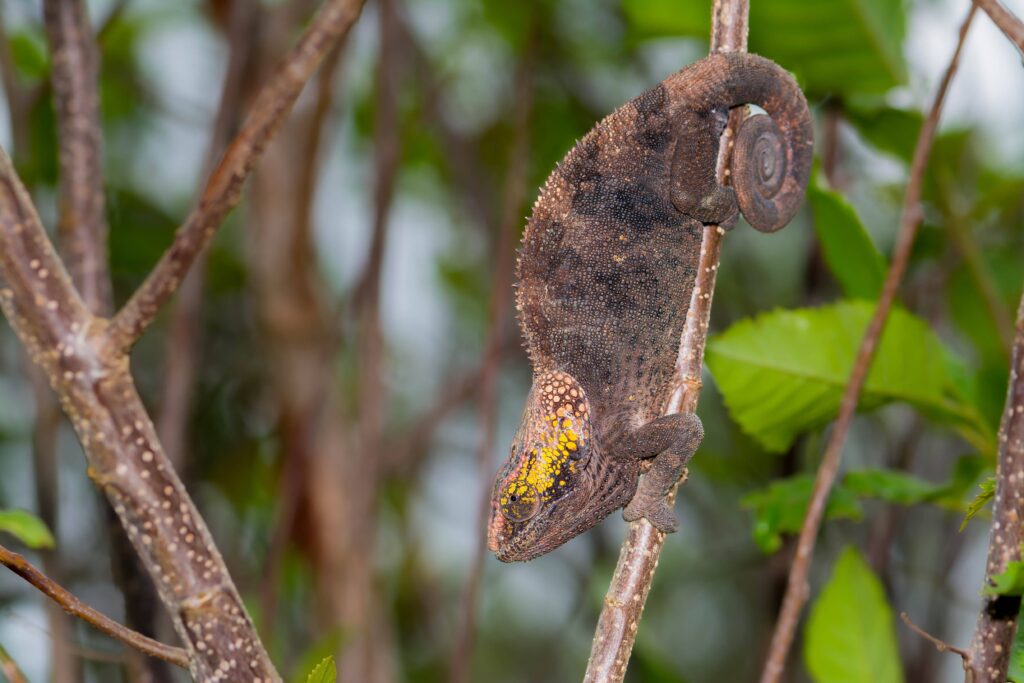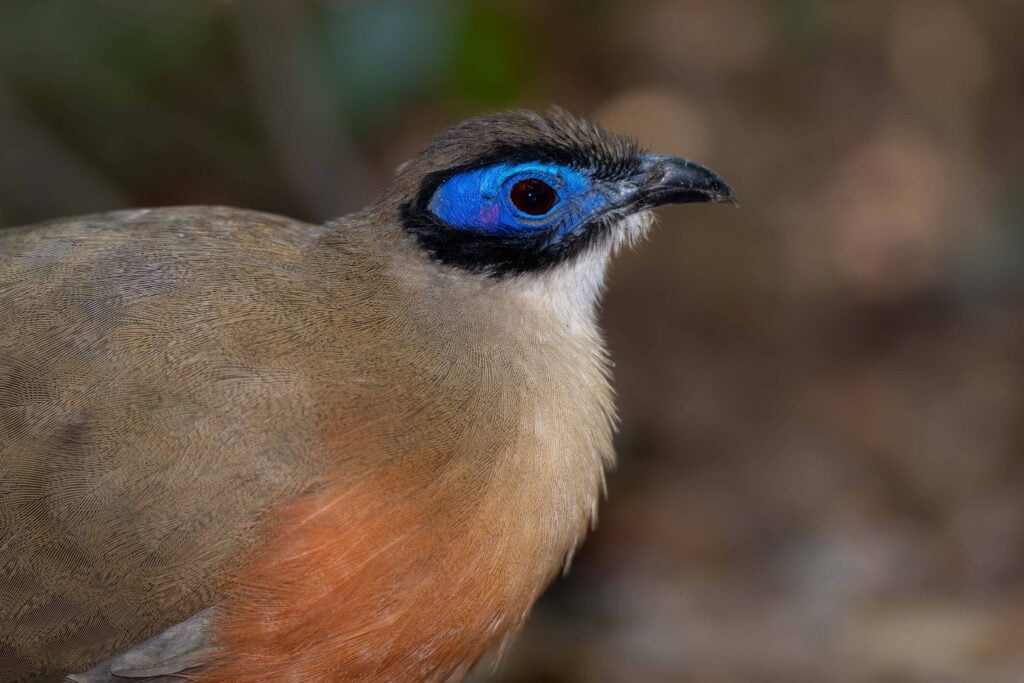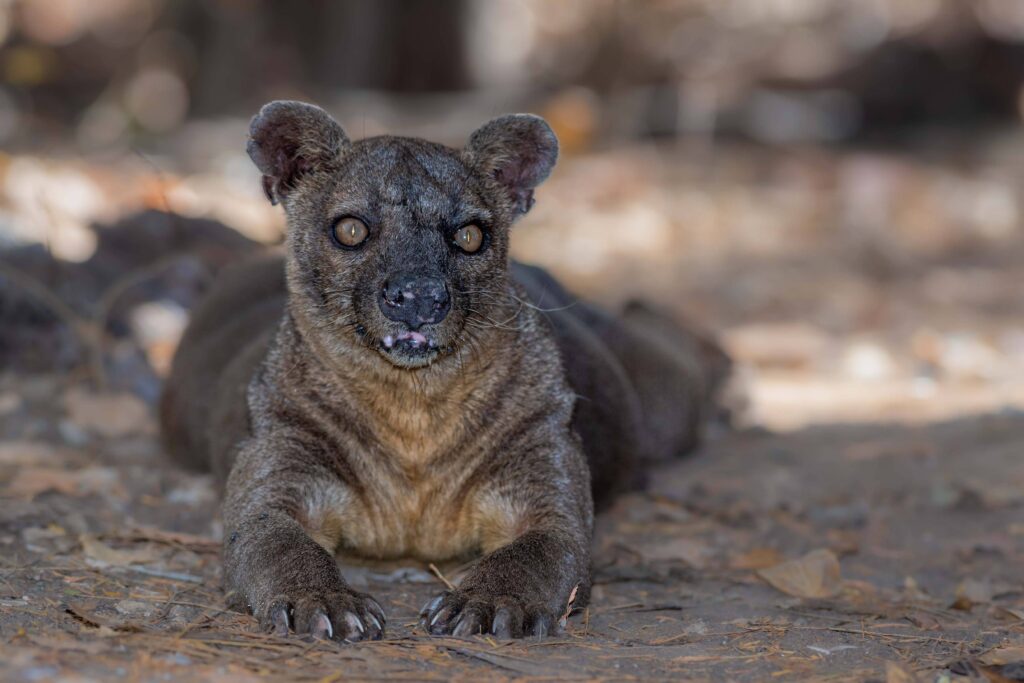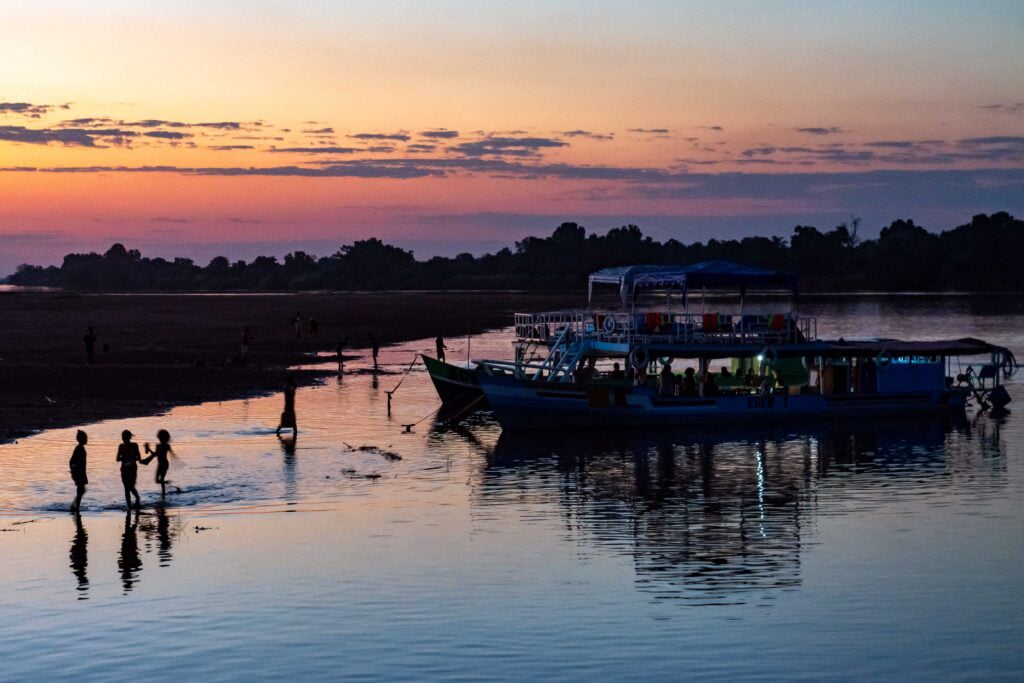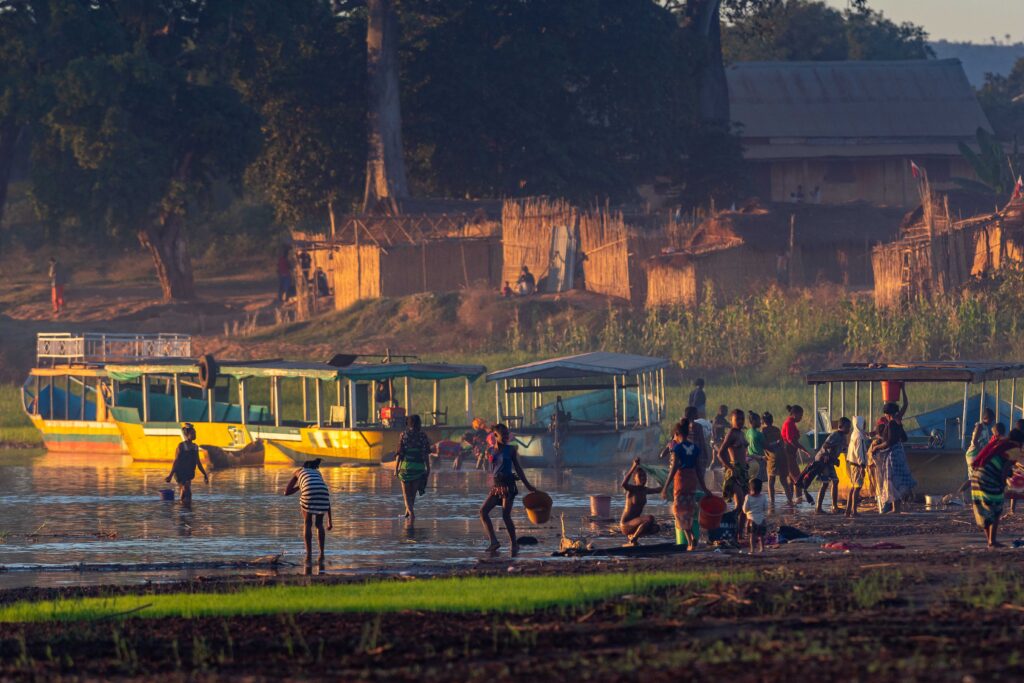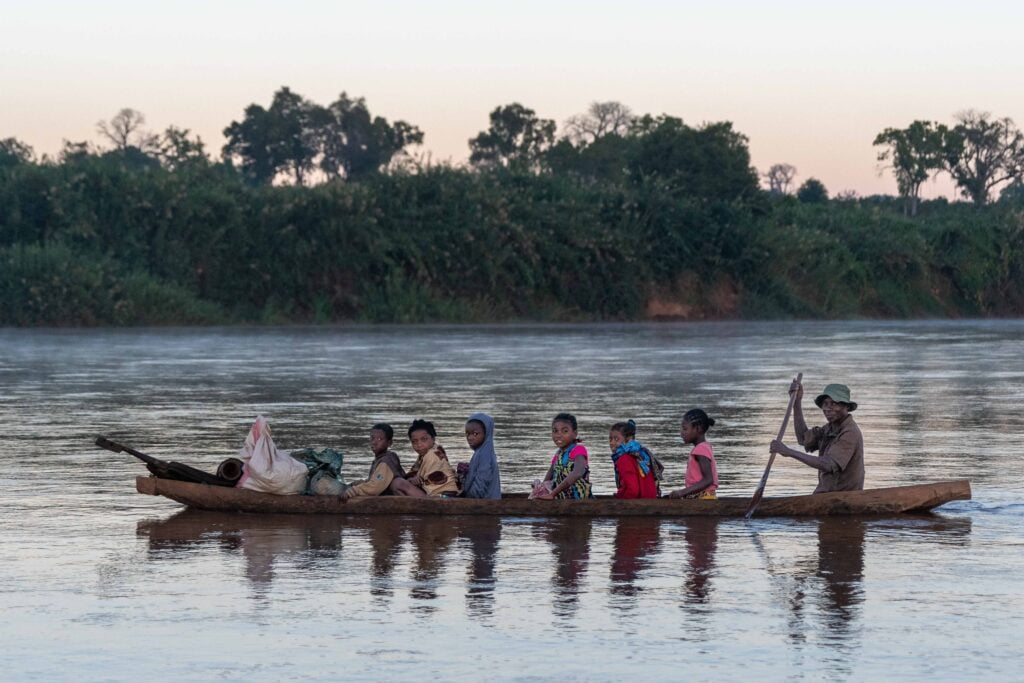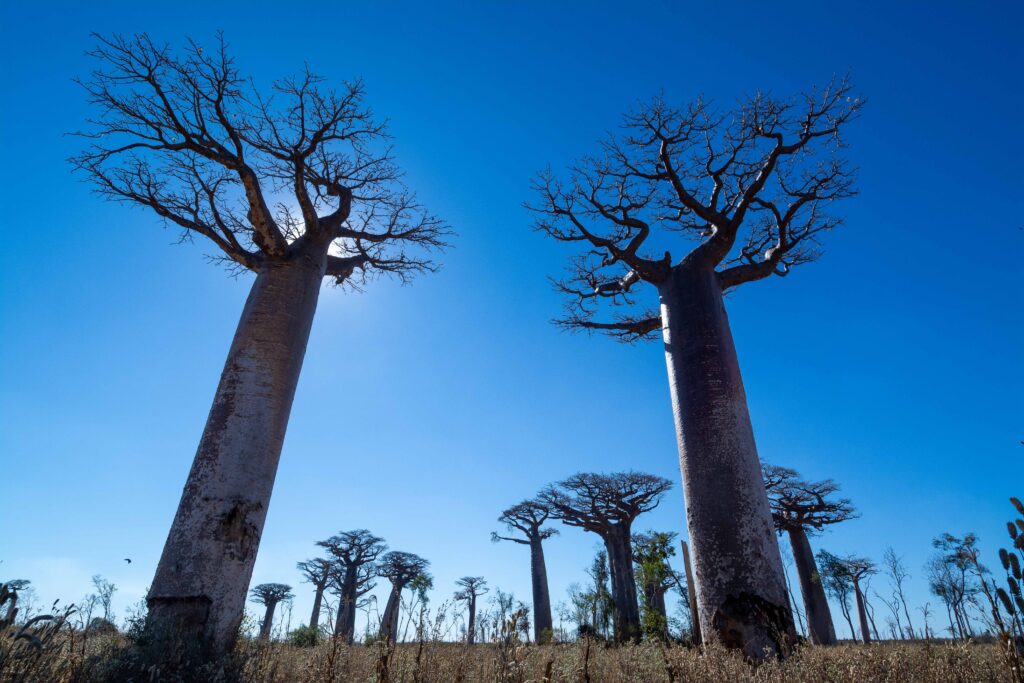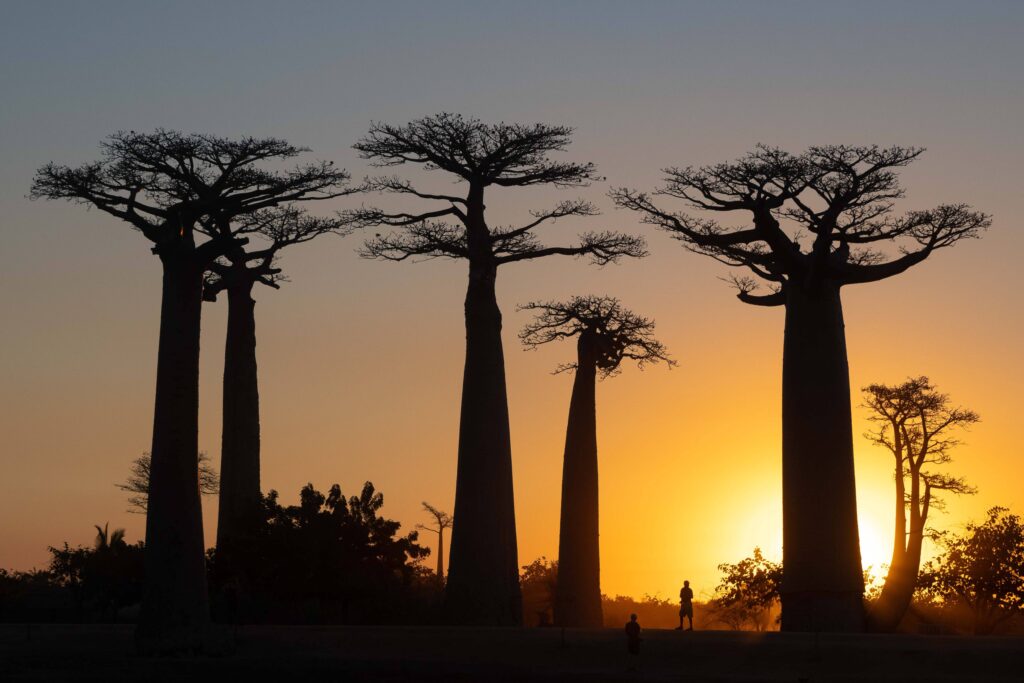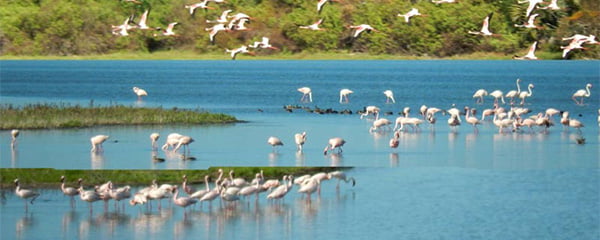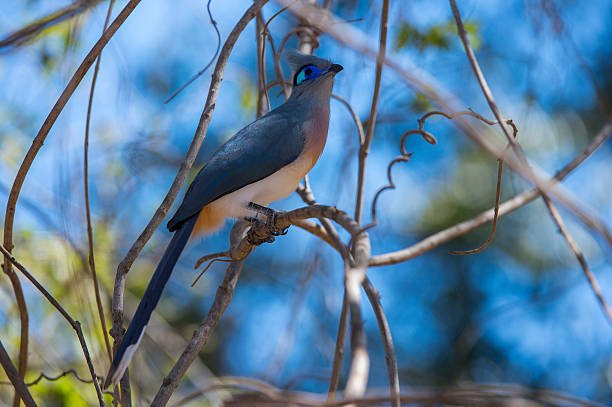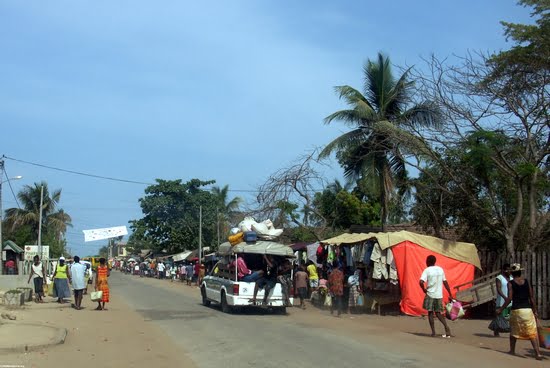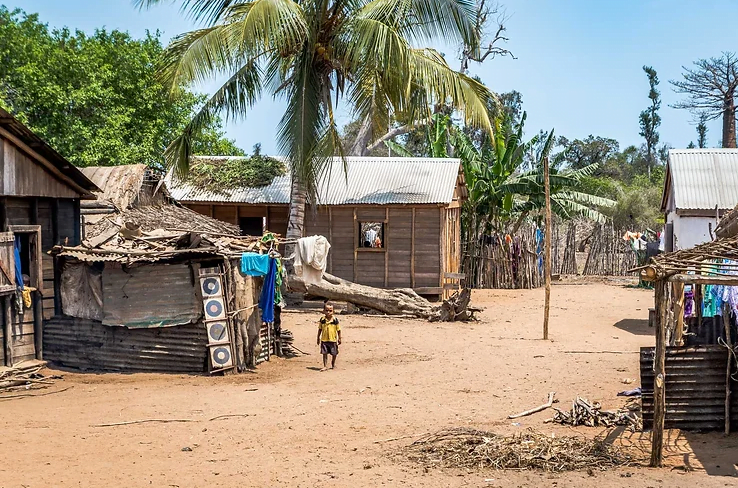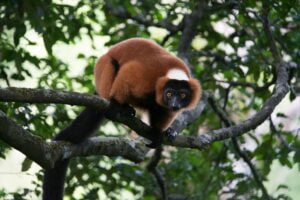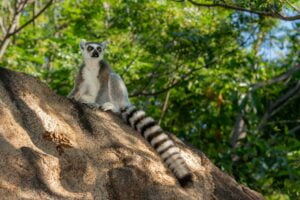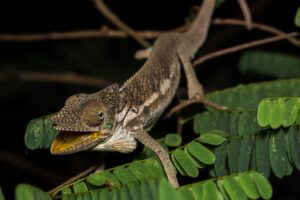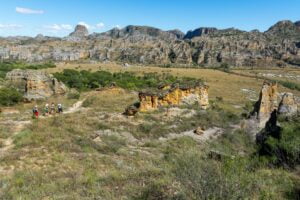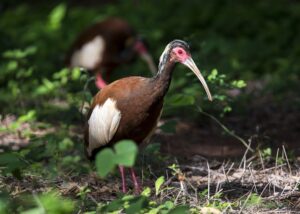
- Madagascar travel
- Morondava & West
Morondava & West
Discover Madagascar's Tsingy: Guided Wildlife Tours
The site, featuring the Manambolo River gorge, intact forests, lakes, mangrove swamps, dense and dry forests, and the iconic tsingy limestone formations, has been a UNESCO World Heritage site since 1990. The tsingy, composed of sharp, high, and ripped limestones, resulted from river erosion on a vast limestone plateau around 5 million years ago, shaping a spectacular landscape of peaks, faults, and cracks. The park, situated between the abrupt Bemaraha Cliffs to the east and undulating hills to the north, offers a diverse topography with restricted access to extensive pinnacle formations in the south, including the breathtaking Manambolo Gorge. Despite its remote location, the park is increasingly popular among tourists, making it a key attraction for Madagascar tourism.
Access to the park involves a scenic journey through Belo sur Tsiribihina or a waterway adventure via Ankavandra, with canoe tours lasting at least three days. The park is accessible in the dry season from May to November. Despite the challenging heat, visitors typically stay over three nights to fully explore this unique and captivating destination. Central to the park’s attractions is the exploration of its unique tsingy formations. Various trails cater to botanists, ornithologists, speleologists, photographers, and active enthusiasts. The Tsingy de Bemaraha hosts an exceptionally large number of endemic plant and animal species, adapting to different ecosystems on the limestone needle’s summit, slope, and base.
The stone forest, though barren in appearance, is a habitat for a diverse array of animal species, including 13 lemur species, over 100 bird species, and numerous reptiles and amphibians. The park’s flora and fauna boast over 85% endemism, with about 650 plant species, succulents, orchids, and iconic baobab trees. For those interested in Madagascar wildlife, this park offers a unique opportunity to observe rare species in their natural habitat. Whether you are interested in Madagascar guided tours or exploring on your own, this site is a must-visit for anyone looking to experience the rich biodiversity and stunning landscapes of Madagascar.
Kirindy forest – Discover Madagascar's Fosa
Kirindy Private Reserve, once a Swiss forestry training station, is now a vibrant German primate research base. Spanning 120 km² of deciduous dry forest, it is a remarkable area in Madagascar, teeming with diverse fauna and flora. Renowned for the fossa and its nocturnal lemurs, the reserve is home to six nocturnal and two diurnal lemur species, as well as the rare giant jumping rat. November is ideal for a visit, marked by lush greenery and heightened reproductive activity. The dry season, with cooler nights and improved birdwatching conditions, is preferable. The reserve boasts three endemic baobab species, including the giant Adansonia grandidieri and the bottle-shaped A. rubrostipa. Another notable tree is the endangered ebony, Diospyros aculeata.
Kirindy’s standout feature is its mammalian inhabitants, particularly the fossa, a unique predator resembling a cross between a cat and a mongoose. With its distinctive mating season between November 5 and 20, observing the fossa’s behavior is captivating. Even outside the breeding season, encounters with fossas are likely near Kirindy Camp. During the day, the reserve comes alive with Verreaux’s sifakas, red-fronted brown lemurs, and narrow-striped mongooses. Red-tailed sportive lemurs with orange eyes often appear in the late afternoon. Night reveals a vibrant ecosystem of lemurs, including pale fork-marked lemurs and tiny mouse lemurs. Notably, Madame Berthe’s mouse lemur, the smallest primate globally, is found exclusively in Kirindy.
Night walks unveil rich herpetofauna, featuring spiny-tailed iguanas, Brookesia chameleons, Oustalet’s chameleons, ground boas, and various snakes and geckos. The sickle-billed vanga, white-breasted mesite, and giant coua are among the striking bird species. Giant jumping rats, an endangered species, occasionally visit the camp, showcasing the delicate balance of Kirindy’s unique ecosystem.
Madagascar Adventure Tours: Tsiribihina River Highlights
Experience the tranquility of a two-and-a-half-day journey covering 150 km down Madagascar’s Tsiribihina River with our guided tours. Immerse yourself in the dynamic landscape of sandbanks, cliffs, and mangroves. Enjoy the soothing sounds of the breeze, the river’s surface, lemur jumps, and the overall silence of nature. This popular adventure dates back to colonial times when French colonists explored the riverbanks by pirogue. Today, the Tsiribihina remains a vital lifeline, serving as a highway, marketplace, and playground. Departing from Miandrivazo, embark on pirogues or motorized landing crafts called « chalands » for a cruise reminiscent of 19th-century Mississippi boats. As you navigate the river, witness diverse landscapes, from lunar meanders to grassy savannas and lush vegetation housing abundant wildlife.
Encounter lemurs, chameleons, and various bird species on your Madagascar travel. The highlight is the Gorge of Bemaraha and the stunning Anosin’ Ampela waterfall, offering a refreshing stop for intrepid travelers. Marvel at the austere beauty of the Malagasy West scenery, featuring red earth hills, rice paddies, and baobab forests. Each evening, enjoy magical sunsets at the bivouac on a sandbank, accompanied by the laughter of local children seeking bonbons and pictures. The trip concludes at Belo-sur-Tsiribihina, providing options to head south to Morondava or north to Bekopaka for the Tsingy de Bemaraha National Park. Escape the bustling city sounds and immerse yourself in the symphony of nature. Experience the meditative whistle of night insects and gaze at the unparalleled Milky Way of the Tsiribihina River.
Visit Baobab Avenue Madagascar
The Avenue of the Baobabs, considered Madagascar’s most beautiful road, lies between Morondava and Belo-Sur-Tsiribihina. The legendary Allée de Baobab spans 250 meters, showcasing the photogenic silhouette of the impressive Adansonia grandidieri trees, some over 30 meters high. Belonging to Madagascar’s landmark species, these giants, present for over 1000 years, draw photographers worldwide. The Baobab Alley is a magical attraction where these solitary trees cluster, forming a columned avenue along the dusty road. Adapted to the harsh environment, baobabs boast massive trunks, crooked branches, and furry fruit.
Their success lies in a large water storage capacity, holding up to 300 liters, allowing them to survive extended periods without rain. With a lifespan exceeding 500 years, baobabs are both symbols of pride for the Menabe region and endangered. A ride through the Avenue is a memorable experience, especially during sunrise and sunset when the trunks’ colors intensify, and shadows create an exotic atmosphere. The flowering period, enhancing the spectacle, occurs between February and March.
Visit Madagascar's Kirindy Mitea National Park
Kirindy Mitea National Park, located 90 km south of Morondava in the ancient kingdom of Menabe, spans 722 km². Established in 1997 and opened to visitors in 2006, it is one of Madagascar’s youngest protected areas. The park uniquely converges western and southern biotopes, offering tropical, dry deciduous, and littoral spiny forests, coastal mangroves, grassy dunes, lakes, beaches, and coral reefs. Home to the greatest density of primates globally, Kirindy Mitea hosts lemurs such as Verraux sifaka, red-tailed sportive, ring-tailed, and red-fronted brown lemur. The park is also renowned for its rich birdlife, with 58 species, including 18 endemics. Among the vulnerable species are pink flamingos, Lesser flamingo, Bernier’s teal, and Malagasy kingfisher.
In addition to lemurs and birds, the park features over 90 butterfly species, imposing baobabs, mangroves, and diverse land fauna. The fossa, a nocturnal predator and relative of the mongoose, is another highlight. Kirindy Mitea’s marine component includes whales, hammerhead sharks, nudibranchs, and coral reefs across seven small islands. The park experiences extreme seasonal changes, with a hot rainy season (December to February) followed by nine months of warm temperatures and little rain. Hiking trails like Circuit Ambondro-Sirave and Circuit Maetsakaloe offer opportunities to explore sand dunes, lakes, forests, and beaches. Kirindy Mitea National Park, with its varied landscape, is a unique destination for nature enthusiasts and photographers, providing an eco-sensitive transition zone for three ecosystems – spiny desert, dry forest, and mangroves.
Morondava Tours: Explore Madagascar's Baobab Alley
Morondava, located in west Madagascar, is a tranquil coastal town surrounded by forest reserves and abundant wildlife. It offers a serene escape, with less crowding and minimal beggars. The extensive north-side beaches add to its appeal. Historically, Morondava was a hub of the Sakalava Kingdom and a favored stop for sailors. Today, it thrives in sugar and rice farming and serves as a popular base for exploring attractions like Tsingy de Bemaraha National Park, Belo-sur-Mer, Kirindy forest, and more. The dry season, with daytime temperatures around 27°C and pleasant nights at 14-15°C, is the best time to visit.
Morondava boasts the rich Sakalava culture, highlighted by royal tombs adorned with frescoes and sculptures depicting the life of the deceased, reflecting an intriguing blend of naivety and erotic symbolism. The Mozambique Channel remains a vital route for the Sakalava, whose daily life revolves around fishing, farming, and gathering wild products like raffia, wood, honey, and « lasira » wax for trade. Morondava’s unique customs and lively festivities, fueled by potent local drinks, make it a distinctive and special destination, also serving as the epicenter for Sakalava fighting.
Guided Tours in Belo sur Mer: Experience Madagascar's Nature
Belo-sur-Mer, a captivating Sakalava Menabe village in Morondava, draws tourists seeking the authenticity of Vezo culture. Nestled away from typical tourist paths, it offers a glimpse into an ancestral way of life. The village, surrounded by coconut palms and extensive mangrove forests, boasts a pristine beach and transparent emerald waters. Life here revolves around traditional fishing and a bustling shipyard. The Sakalava, skilled fishers using outrigger canoes, uphold a heritage dating back to the proto-Malagasy voyages. Belo-sur-Mer impresses with its clean, organized surroundings, reflecting the pride of its inhabitants. Accessing Belo-sur-Mer may be challenging, but the rewards include stunning sunsets, a bay with sandbanks, and potential whale sightings from mid-June to September. The rich marine life includes reef sharks, turtles, and humpback whales.
Activities abound in and around Belo-sur-Mer:
- Nature Treks and Sea Cruises: Explore the forest and islets.
- Snorkeling: Discover marine life in clear waters.
- Coral Islands Cruise: Visit a marine national park with vibrant coral banks.
- Fishing: Enjoy underwater or trolling fishing in the abundant waters.
- Menaky Bay Visit: Observe seabed, kayak in mangroves, and explore saltworks.
- Mangrove Exploration: Glide through mangroves in kayaks or canoes.
- Antsira Salt Works: Experience traditional salt harvesting and visit the dwarf baobab park.
- Guided Shipyard Tour: Witness Vezo boat construction, a unique art form preserved in Belo-sur-Mer.
- Sea Excursions: Chance encounters with dolphins and humpback whales from June to October.
Belo-sur-Mer promises an unforgettable blend of cultural immersion and natural wonders, making it a must-visit destination for those seeking a unique and authentic experience in Madagascar travel and Madagascar tourism.

